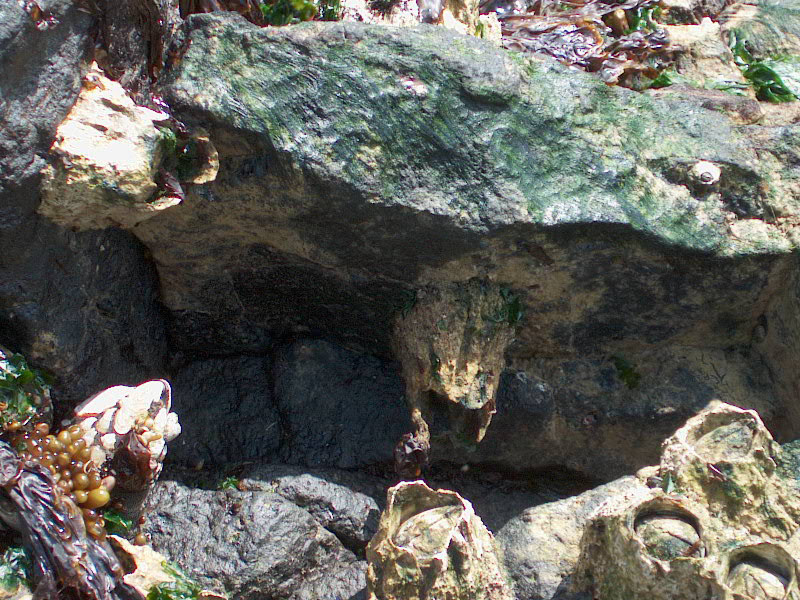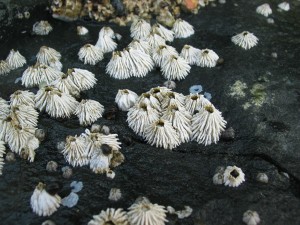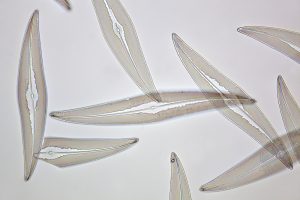Videoclips from. the following TV News Channels have been assembled here by Gerald Kasegar PC YR 21, and Alex Chan PC Yr. 31
CH NEWS –CBC News–VI News –CTV News
Videoclips from. the following TV News Channels have been assembled here by Gerald Kasegar PC YR 21, and Alex Chan PC Yr. 31
CH NEWS –CBC News–VI News –CTV News
Text of speech by Alyssa Holland (year 30)
Tidal Current Energy Demonstration Project: Renewable Energy for Race Rocks
As I am both an Environmental Systems student and a member of the diving activity, Race Rocks has played a central role in the education Pearson has given me. Race Rocks is truly the ultimate living classroom, teaching all those who interact with it about the beauty and wonder of the natural environment, and about the importance of responsible environmental stewardship. It is a very special place that gives so much to the college and its students, and it is very gratifying to think how much the ecosystem will benefit from the Clean Current project.
For Pearson students, Race Rocks is much more than a group of islands. On one level or another, we all interact with it and benefit from it, and consider it part of our home. Whether through poking around in the inter-tidal zone for class, or working with a researcher from the University of Victoria 10 metres underwater, or staying on the island for a weekend to give its 2 full-time residents a break, we have built a connection with this magical place. As such, ensuring its health and protection are very important to me, and to the student body as a whole.
Pearson is by its very nature an innovative place – even the concept of a United World College is radical and still experimental. I can think of no better or more appropriate environment for such an exciting new technology as this to be implemented, as it truly embodies the spirit of innovation and idealism that makes Pearson College unique. This new turbine will stand as much more than a symbol of scientific progress; it will also be a concrete demonstration that even an ideal as difficult to live by as environmentalism can be successfully put into practice when we are innovative. That will be a lesson to guide both students and visitors for years to come.
Thanks to an innovative partnership between Lester B. Pearson College of the Pacific, EnCana Corporation and Clean Current Power Systems Incorporated, Canada’s first free-stream tidal power project will be built at the Race Rocks Ecological Reserve, offshore of Vancouver Island in British Columbia. The project will enable the world famous marine park to tap into surrounding ocean currents and convert tidal energy to electric power for its needs beginning in early 2006. Making the announcement were:
Gwyn Morgan, President and CEO of EnCana,
Glen Darou, President and CEO of Clean Current,
Richard Neufeld, British Columbia Minister of Energy and Mines,
and Stuart Walker, Director of Pearson College.
See the press release and pictures. http://www.racerocks.com/racerock/energy/tidalenergy/tidalenergyannounce.htm
 Description: This common red alga is especially noticeable on the surfaces of smooth boulders. It grows as thin filaments of a rusty, purplish brown, or blackish colour.
Description: This common red alga is especially noticeable on the surfaces of smooth boulders. It grows as thin filaments of a rusty, purplish brown, or blackish colour.
As the tide ebbs, the filaments spread out over the rock in a way reminiscent of a few hairs artfully plastered down on a nearly bald head.
Habitat: On rocks in the upper and middle intertidal zones.
Pacific Coast Distribution: Alaska to California.
…..Eugene Kozloff, 1996
Phylum: Rhodophyta
Class: Bangiophycidae
Order: Bangiales
Family: Bangiaceae
Bangia fuscopurpurea (Dillw.) Lyngbye
See other members of the Phylum Rhodophyta
and Image File |
 The Race Rocks taxonomy is a collaborative venture originally started with the Biology and Environmental Systems students of Lester Pearson College UWC. It now also has contributions added by Faculty, Staff, Volunteers and Observers on the remote control webcams. The Race Rocks taxonomy is a collaborative venture originally started with the Biology and Environmental Systems students of Lester Pearson College UWC. It now also has contributions added by Faculty, Staff, Volunteers and Observers on the remote control webcams.Ryan Murphy 2005 |
Thatched barnacles are at a relatively low level in the intertidal zone as can be sen in this photo of their habitat.
Domain Eukarya
Kingdom
Phylum
Class
Order
Family
Genus Semibalanus
Species carriosus
Common Name: Thatched barnacle

Other Members of the Phylum Arthropoda at Race Rocks.
and Image File |
 The Race Rocks taxonomy is a collaborative venture originally started with the Biology and Environmental Systems students of Lester Pearson College UWC. It now also has contributions added by Faculty, Staff, Volunteers and Observers on the remote control webcams. The Race Rocks taxonomy is a collaborative venture originally started with the Biology and Environmental Systems students of Lester Pearson College UWC. It now also has contributions added by Faculty, Staff, Volunteers and Observers on the remote control webcams. |
This pdf is from: Recommendations for Effective Marine Planning Processes
Lessons Learned from Case Studies in Canada, the USA
and Australia:
see PDF: wwf_northwestatlantic_recommendationsforeffectivemarineplanning
Living Oceans Society
and World Wildlife Fund Canada
January 2005
See page 16-117 for : Cooperative management of marine protected areas, the First Nations view: Lessons learned from the Race Rocks Area of Interest.
Domain Eukarya
Kingdom Chromista
Subkingdom Chromobiota
Infrakingdom Heterokonta
Phylum Bacillariophyta
Class Bacillariophyceae
Subclass Bacillariophycidae
Order Biddulphiales
Family Bidduulphiaceae
Genus Biddulphia
Species sp. ?
Common Name: Diatom
Other members of the Phylum Bacillariophyta
and Image File |
 The Race Rocks taxonomy is a collaborative venture originally started with the Biology and Environmental Systems students of Lester Pearson College UWC. It now also has contributions added by Faculty, Staff, Volunteers and Observers on the remote control webcams. The Race Rocks taxonomy is a collaborative venture originally started with the Biology and Environmental Systems students of Lester Pearson College UWC. It now also has contributions added by Faculty, Staff, Volunteers and Observers on the remote control webcams.
name –year (PC) |
 Photo from Wikipedia -Frank Fox
Photo from Wikipedia -Frank Fox
Organisms categorized within the genus Pleurosigma appear all over the world, regardless of location. The genus is one of the larger groups of diatoms, containing hundred of different species and also making it very difficult to identify exact taxonomy of organisms.
Domain Eukarya
Kingdom Chromista
Subkingdom Chromobiota
Infrakingdom Heterokonta
Phylum Bacillariophyta
Class Bacillariophyceae
Subclass Bacillariophycidae
Order Naviculales
Family Pleurosigmataceae
Genus Pleurosigma
Species sp.? possibly P. angulatum
Common Name: Diatom
Other members of the Phylum Bacillariophyta
and Image File |
 The Race Rocks taxonomy is a collaborative venture originally started with the Biology and Environmental Systems students of Lester Pearson College UWC. It now also has contributions added by Faculty, Staff, Volunteers and Observers on the remote control webcams. The Race Rocks taxonomy is a collaborative venture originally started with the Biology and Environmental Systems students of Lester Pearson College UWC. It now also has contributions added by Faculty, Staff, Volunteers and Observers on the remote control webcams. |
From Phyto’pedia Length (apical axis): 10 – 110 μm
Width (transapical axis): 2 – 4 μm
Height (pervalvar axis): 3 – 8 μm
Marginal areolae: 10 – 12 in 10 μm
(Cupp 1943, Kraberg et al. 2010)
Commonly found in nutrient-rich upwelling regions (Abrantes 1988, cited in Kobayashi and Takahashi 2002). Its presence indicates conditions of high productivity (Schrader and Sorknes 1990, cited in Kobayashi and Takahashi 2002). Optimal temperature ∼15 °C (Resende 2007). Salinity range from ∼12 – 33 (Demir 2007, Burns 1977).
Domain Eukarya
Kingdom Chromista
Subkingdom Chromobiota
Infrakingdom Heterokonta
Phylum Bacillariophyta
Class Bacillariophyceae
Subclass Bacillariophycidae
Order Thalassionematales
Family Thalassionemataceae
Genus Thallasiothrix
Species sp.? possibly T fraunfeldi var. nitzschioides
Common Name: Diatom
Other members of the Phylum Bacillariophyta
and Image File |
 The Race Rocks taxonomy is a collaborative venture originally started with the Biology and Environmental Systems students of Lester Pearson College UWC. It now also has contributions added by Faculty, Staff, Volunteers and Observers on the remote control webcams. The Race Rocks taxonomy is a collaborative venture originally started with the Biology and Environmental Systems students of Lester Pearson College UWC. It now also has contributions added by Faculty, Staff, Volunteers and Observers on the remote control webcams.
name –year (PC) |
We see these often in the summer in the lower intertidal zone. Their yellow egg cases also show up on the underside of rocks. They have a sharp penetrating tongue with which they can penetrate the shells of other molluscs
Domain Eukarya
Kingdom Animalia
Phylum Mollusca
Class Gastropoda
Subclass Prosobranchia
Order Neogastropoda
Suborder Rachiglossa
Family Muricidae
Genus Ceratostoma
Species foliata
Common Name: Leafy Hornmouth
Garry Fletcher